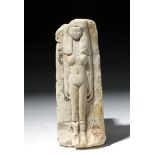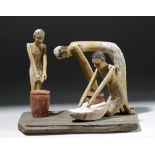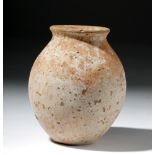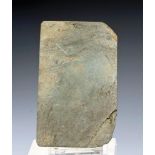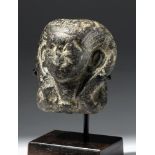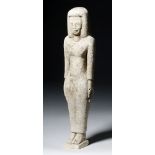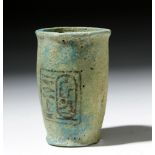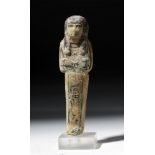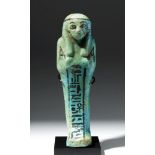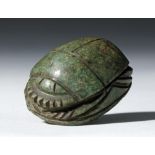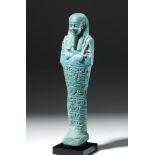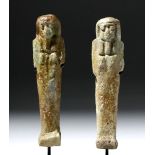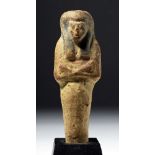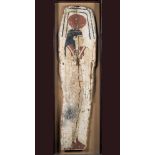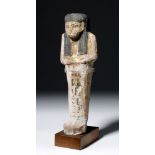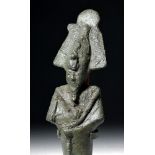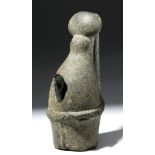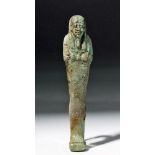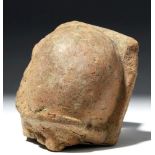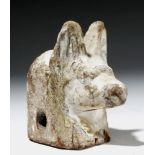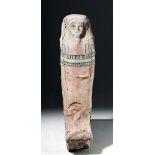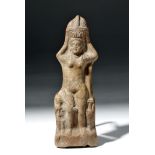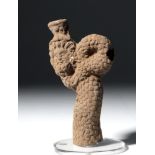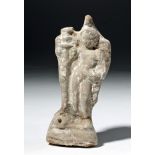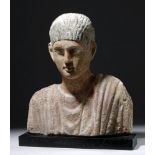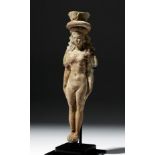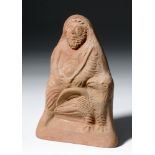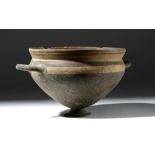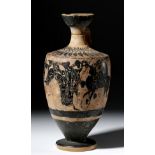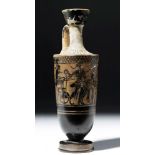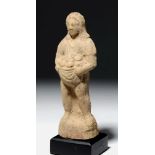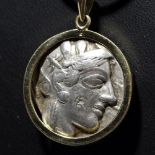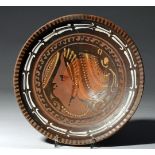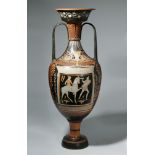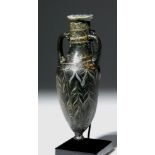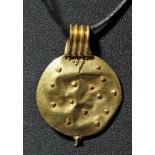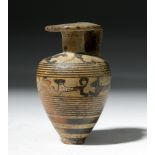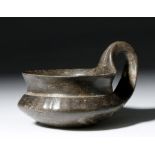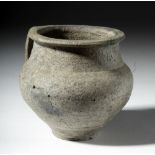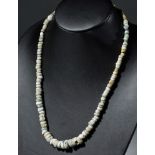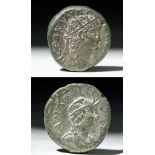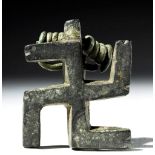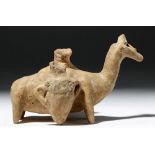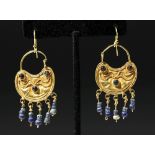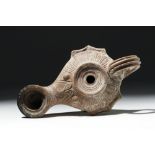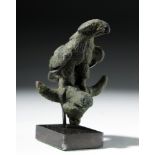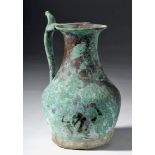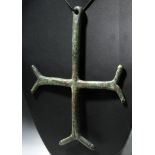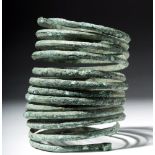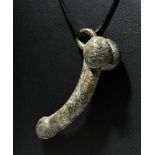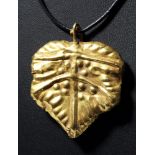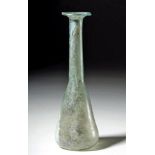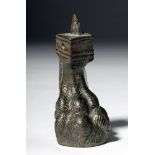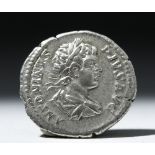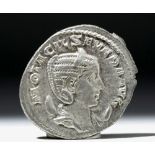Refine your search
Estimate
Category
- Sculpture (185)
- Ceramics (86)
- Collectables (27)
- Jewellery (25)
- Chinese Works of Art (16)
- Coins (15)
- Ethnographica & Tribal Art (15)
- Models, Toys, Dolls & Games (15)
- Greek, Roman, Egyptian & Other Antiquities (13)
- Glassware (12)
- Textiles (9)
- Arms, Armour & Militaria (8)
- Oil, Acrylic paintings & Mixed Media (4)
- Vintage Fashion (4)
- Salvage & Architectural Antiques (3)
- Taxidermy & Natural History (3)
- Furniture (2)
- Japanese Works of Art (2)
- Lighting (2)
- Metalware (2)
- Musical Instruments & Memorabilia (2)
- Silver & Silver-plated items (2)
- Watches & Watch accessories (2)
- Books & Periodicals (1)
- List
- Grid
A subscription to the Price Guide is required to view results for auctions ten days or older. Click here for more information
Egypt, Middle Kingdom, ca. 2050 to 1640 BCE. A pottery temple fragment showing a standing woman in relief with remains of orange and red pigment e...
Ancient Egypt, Middle Kingdom, late 11th Dynasty to early 12th Dynasty, ca. 2060 to 1900 BCE. A wooden and plaster model made for a tomb showing t...
Ancient Egypt, Naqada II, ca. 3500 BCE. A Nile silt mud molded ovoid jar with a short neck, a slight rolled rim, and a rounded base. A light layer...
Ancient Egypt, Pre-Dynastic Period, Gerzeran Period, ca. 3000 BCE. This is a smooth, pointed, tapered and rectangular greenish gray stone, carved....
Ancient Egypt, Middle Kingdom, late 12th to early 13th Dynasty, ca. 1900 to 1700 BCE. A hard, black stone head, possibly granite, expertly carved,...
Egypt, Middle Kingdom, ca. 2050 to 1640 BCE. A white, molded faience figure of a standing woman wearing a high-necked shift dress that falls to he...
Egypt, New Kingdom, 19th Dynasty, 1279 to 1213 BCE. A blue-glazed faience cup, cylindrical and tapering in form, with a flared rim and foot, inscr...
Egypt, Third Intermediate Period, ca. 1070 to 712 BCE. This is a late period ushabti (shabti), in mummiform with the arms holding hoes. It is made...
Egypt, Third Intermediate Period, ca. 1070 to 712 BCE. This is a late period ushabti (shabti), painted with a turquoise faience that turns pale br...
Egypt, Third Intermediate Period, 22nd Dynasty (Bubastite Dynasty), ca. 945 to 720 BCE. A well-made shabti (ushabti) found in Abydos, with an insc...
Egypt, New Kingdom / Third Intermediate Period, ca. 1550 to 712 BCE. This is a large greenstone "heart" scarab with carved details of the head, wi...
Ancient Egypt, Late Period, 26th Dynasty, ca. 672 to 525 BCE. A wonderful, large shabti (ushabti) in the classic, carefully modeled style of the 2...
Egypt, Third Intermediate Period, ca. 1070 to 712 BCE. A pair of green-brown faience ushabtis (shabtis), both mold made and mummiform. Size of eac...
Egypt, Third Intermediate Period, ca. 1070 to 712 BCE. A terracotta mummiform ushabti, painted with black and red details over an orange backgroun...
Egypt, Late Period, ca. 715 to 330 BCE. Painted wood panel from the back of a sarcophagus depicting Isis, goddess of health, marriage and wisdom....
Egypt, Third Intermediate Period, ca. 1070 to 712 BCE. This is a large pottery painted ushabti (shabti). Ushabti were placed in tombs as grave goo...
Egypt, Late Dynastic Period, 26th to 30th Dynasty, ca. 664 to 342 BCE. A solid cast bronze votive statuette depicting Osiris, the god of the after...
Ancient Egypt, Late Period, ca. 600 to 332 BCE. This is a small, hard, grey stone representation of the Pschent, the double crown worn by rulers o...
Egypt, Third Intermediate Period, ca. 1070 to 712 BCE. This is a late period ushabti (shabti), made of a green faience and mummiform, with raised ...
Ancient Egypt, Late Period, ca. 600 to 30 BCE. A large, mold-made terracotta scarab with the rounded body form and a flat base. Size: 3.5" L x 3" ...
Ancient Egypt, Late Ptolemaic to Roman Period, ca. 1st century BCE to 1st century CE. A charming, small wooden head of the jackal god Anubis with ...
Egypt, Late Dynastic Period, 26th Dynasty, ca. 664 to 525 BCE. A wonderfully preserved example of a small model of a coffin, made from two pieces ...
Egypt, Late Period, Dynasties 26 to 31, ca. 664 to 332 BCE. A fine brownware pottery molded juglet depicting the head of Bes, a protector deity, w...
Egypt, Ptolemaic to Roman periods, ca. 332 to 30 BCE. A pretty mold made statue of the goddess Isis-Hathor, done in the style well known from exca...
Egypt, Greco-Roman/Ptolemaic period, from Alexandria, ca. 323 to 30 BCE. This is an interesting and fairly unique terracotta figure, depicting a b...
Egypt, Hellenistic Period, ca. 2nd to 1st century BCE. A mold-made figure of Harpocrates, the god of silence, secrets, and confidentiality; he was...
Ancient Egypt, Romano-Egyptian Period, ca. 1st century BCE to 1st century CE. A stunning large plaster bust of a young man, painted brightly; he w...
Egypt, Alexandria, 1st century BCE to 1st century CE. An alluring terracotta figure depicting the goddess Isis, standing in the nude with arms at ...
Egypt, Romano-Egyptian period, ca. 30 BCE to 2nd century CE. This hollow terracotta figural shows Jupiter (Zeus) seated with an eagle. This is the...
Greek Ionian Bichrome Kylix
Greek, Greek colonies in Asia Minor, ca. 6th century BCE. A beautiful example of a deep kylix, a cup for drinking, with twin horizontal loop handl...
Greece, Athens, ca. 5th century BCE. A black-figure lekythos (oil/libation vessel) painted via the black-figure technique, depicting a male and fe...
Ancient Greece, Athens, ca. 510 to 500 BCE. A graceful Attic, lekythos of an elegant form. This slender vessel, used to store precious olive oil o...
Greece, ca. 5th century BCE. A hollow terracotta mold-made figure of a woman depicted in a wonderful naturalistic pose. She stands with the skirt ...
Athens, Greece, ca. 393 to 300 BCE. A stunning ancient coin set into pendant for necklace. A lovely Greek silver tetradrachm, circa 393-300 BC., (...
Greece, Magna Graecia, southern Italy, Apulia, ca. 340 to 325 BCE. A Greek red-figure plate on a raised foot featuring a "Lady of Fashion" wearing...
Magna Graecia, Southern Italy, Apulia, Virginia Exhibition Painter, ca. 330 to 300 BCE. A masterful Apulian red-figure amphora attributed to A.D. ...
Ancient Greece, Hellenistic period, ca. 3rd to 1st century BCE. A core-form glass amphoriskos of elegant form with tiny foot, ovoid body with twin...
Greece, Hellenistic period, ca. 400 to 31 BCE. 24kt. A beautiful 24k gold pendant with an even decoration of trios of granulated gold on the front...
Ancient Greece, Hellenistic, ca. 323 to 31 CE. A mold-pressed terracotta roundel depicting the bust of a classical deity in relief, possibly Athe...
Etruria, northern Italy, ca. last quarter of 6th century BCE. A near-miniature aryballos of an elegant form with a globular body, tubular neck, an...
Villanovan Impasto Ware Kyathos
Villanovan culture (the earliest Iron Age culture of central and northern Italy), ca. 700-750 BCE. This is a small kyathos with a round mouth and...
Roman Greyware Pottery Jug
Roman, Imperial Period, probably from Roman Britain, ca. 1st to 2nd century CE. A light grey burnished pottery, wheel made, with a bulbous body an...
Eastern Europe, Northern Greece, Roman period, Thrace, ca. 3rd century BCE to 3rd century CE. A finely cast bronze horse and rider. This beautiful...
Roman Empire, ca. 1st to 3rd century CE. Marvelous and wearable necklace comprised entirely of ancient Roman glass beads. Beads run the gamut of...
Roman, Imperial Period, Year 12, 65 or 66 CE. A heavy billon (silver debased with tin) coin minted in Alexandria, Egypt. The front has a bust of E...
Roman Bronze Brooch - Swastika
Roman, Imperial Period, ca. 1st to 2nd century CE. A brooch with a spring mechanism, the attached front in the form of a cast bronze swastika, an ...
Roman, Imperial Period, ca. 1st to 2nd century CE. A hand-molded toy figure of a camel packed with two amphoras hanging on either side of its body...
Ancient Roman Empire, ca. 1st to 3rd century CE. Stunning pair of Roman gold earrings which have been modified so that they can be worn now. Gol...
Huge Roman Pottery Oil Lamp
Roman, Imperial Period, ca. 1st century CE. A huge and gorgeous mold-made pottery oil lamp. It has a wide spout with small burned areas from use a...
Roman, Imperial Period, Eastern Mediterranean, ca. 1st to 2nd century CE. A beautiful bronze cast with excellent details. The eagles stands, ready...
Roman, early Imperial Period, ca. 1st century CE. A beautiful and delicate bronze olpe with a foliate handle that flows sinuously down to the mid-...
Eastern Roman Empire, ca. 1st to 3rd century CE. Interesting man's ring in silver that was then gilded in lovely deep golden color, table of the ...
Roman North Africa, ca. 3rd century CE. A simple four-armed cross with a loop for suspension on one long arm and three arms terminating in v's who...
European Bronze Spiral Armband
Central Europe, Halsatt, ca 800 BCE. A bronze coiled armband made for a very small arm - perhaps a child or young woman - with simple folded-over ...
Roman Empire, ca. 1st to 3rd century CE. A solid-cast bronze pendant in the form of a phallus, symbolic of virility and fertility, the male genita...
Roman Empire, ca. 1st to 3rd centuries CE. Rare high-karat gold pendant in the shape of a large grape leaf with grape clusters throughout. Forme...
Tall Roman Glass Unguent
Roman, Imperial Period, ca. 1st to 5th century CE. A very tall unguent jar made of blue blown glass, with a bell shaped bottom ending a very sligh...
Roman, Imperial Period, ca. 1st to 4th century CE. A beautifully sculpted lion's paw, with a column top and a spike at the top for attachment to t...
Roman, Imperial Period, ca. 215 to 217 CE. A silver antoninianus depicting Caracalla in a right facing bust, in rare unbearded form, and Parthia o...
Rome, Imperial Period, ca. 193 to 217 CE. A small, well-struck silver denarius of Julia Domna, Empress and wife of Emperor Septimius Severus; she ...
